Last Updated on May 1, 2023 by lindseymahoney
If you are just dipping your toe in the gardening pool, planning your first flower bed garden can be intimidating! I have a few close people in my life who are incredible gardeners and I always seek out their advice when I have questions about my flower garden beds.
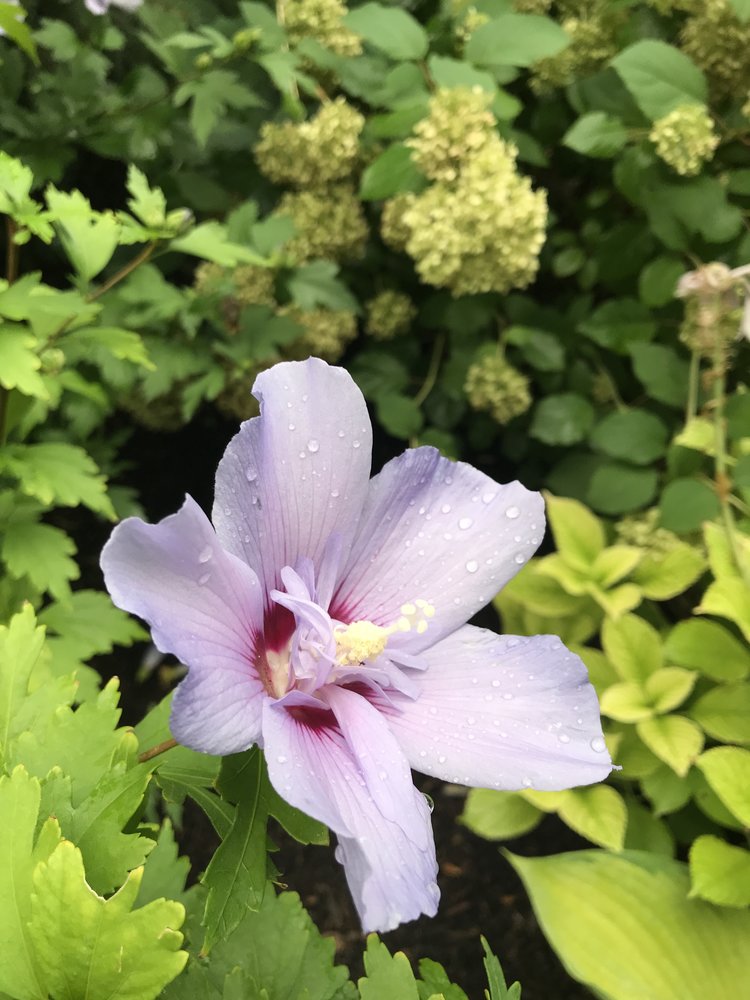
One of those experts that I call is Deb Unverferth.

She has the most beautiful landscaping at her home and is always generous when it comes to sharing knowledge. I met up with Deb and we talked about her best tips for beginner gardeners when they start planning their flower beds.
*Looking for some outdoor DIY projects to try? Check out this roundup of 25+ outdoor DIY projects to tackle at home!
5 Gardening Tips When Planning Your Flower Bed
Affiliate links are included in this blog post, thanks for supporting Building Bluebird!
1 | Plan Flower Bed Design & Layout
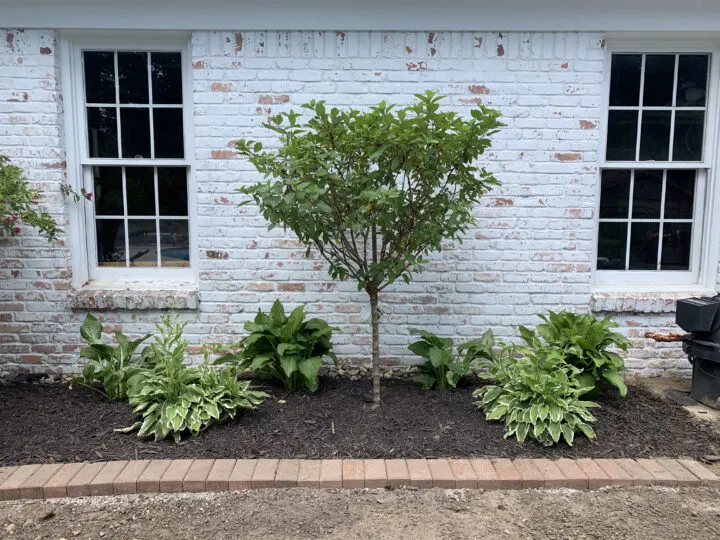
If you are building a flower bed from scratch or changing the layout, you want to come up with a design. This sounds overwhelming but it is really pretty simple.
How big do you want the flower bed to be and how do you want the edge to be shaped?
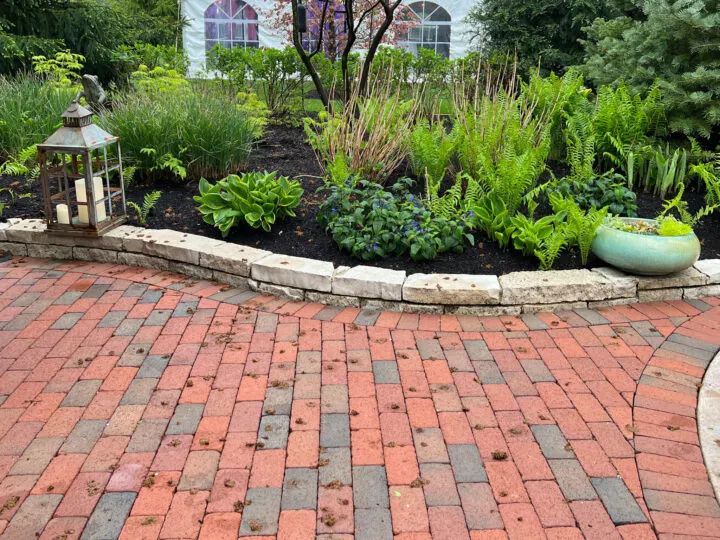
Flower beds can have a curved edge or a simple straight edge. If you have a general idea of the types of plants you want to include in the flower bed, you should have a good idea of the size needed.
Take into consideration the amount of space your plants will need as they mature and grow.
Deb prefers curved flower beds and uses the shadows of rounded treetops to create the edge of the garden. A garden hose is a great tool to try different flower bed designs.
Once you have decided on a flower bed design, use spray paint to trace the edge of the garden bed. A garden edger and flat shovel are good tools to start shaping the edge of the flower bed.
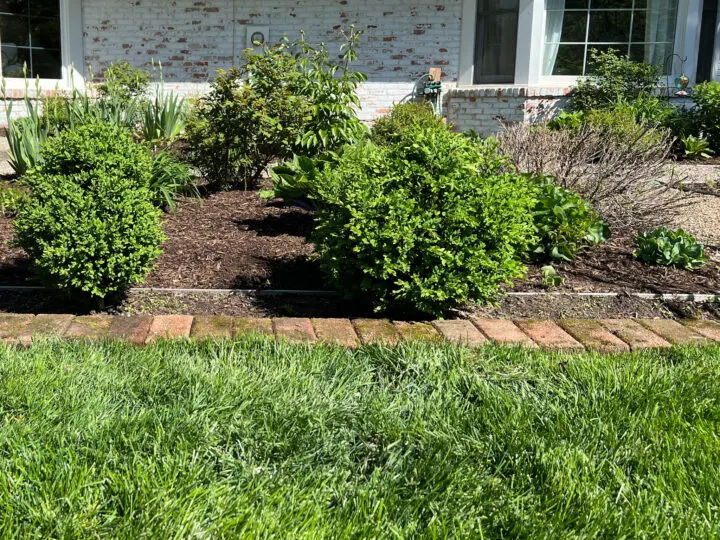
Installing edging material helps to keep mulch in the flower bed and creates a clear delineation between the grass and garden. I like to use bricks to create a charming border around my garden beds.
Here are a few edging options available:
- Plastic edging
- Metal edging – we used this in our English garden to separate the flower beds from the pea gravel pathways
- Brick edging – also used throughout our backyard
- Stone edging
- No edging – mulch transitions to grass
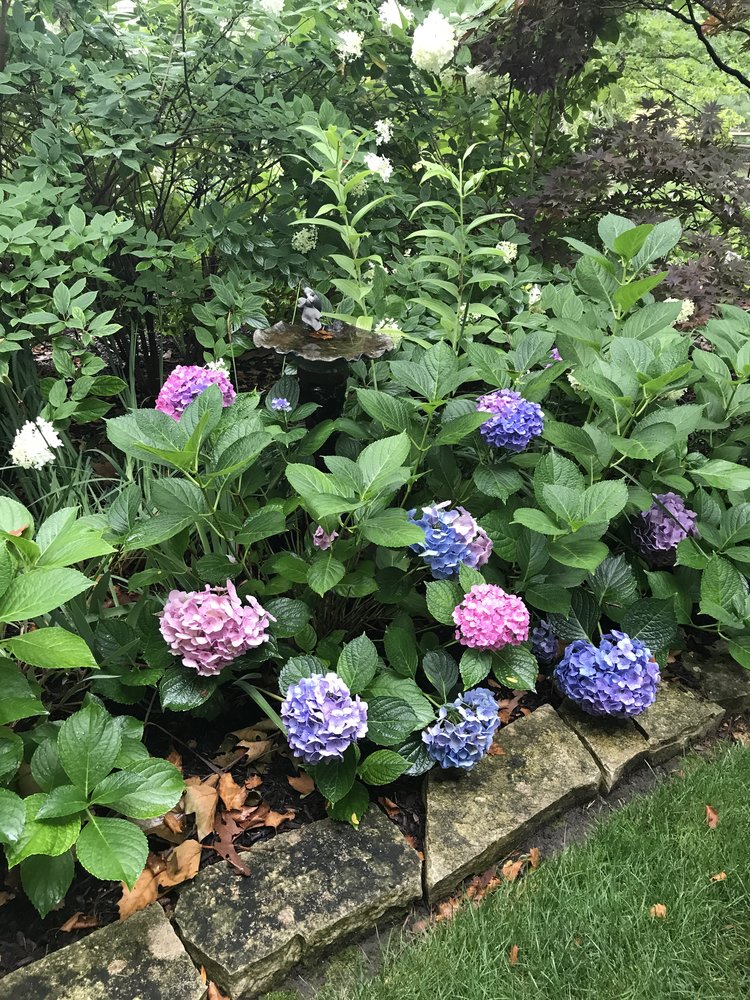
2 | How to Choose Plants

Deb and I both prefer to use native plants when filling our garden beds.
What is a native plant?
A plant that is a part of the balance of nature that has developed over hundreds or thousands of years in a particular region or ecosystem.
Native plants are generally easier to maintain, require less water, and attract wildlife and pollinators. These plants tend to thrive in the local climate and it saves money because you will use less water.
Here are a few of Deb’s favorite native plants to use in NW Ohio:
- Hosta
- Crab apple trees
- Lilac bushes
- Coneflowers
- Spiria
- Spruce trees
- Pine trees
You will also want to consider perennial plants or annuals. Perennial plants grow back every year and annuals have to be replanted each year. I prefer to use primarily perennials in our flower garden and plant beautiful annuals in flower pots.
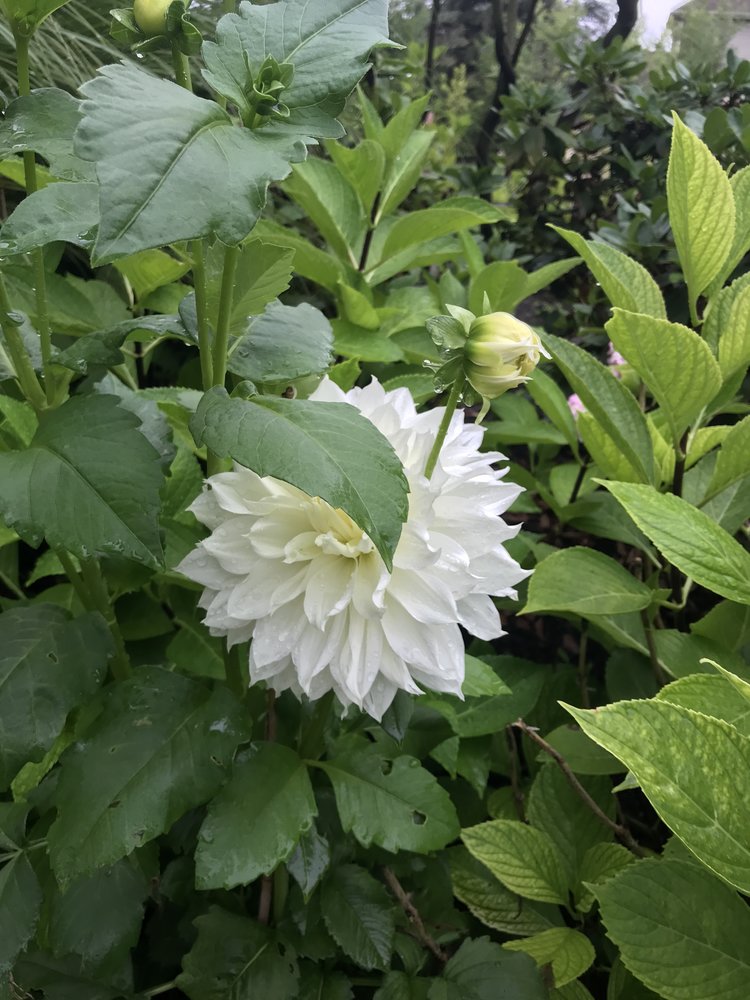
The great thing about perennials is that they can be transferred pretty easily and many of them can be divided into multiple plants.
Most of the plants in our garden are perennials that friends and family divided from their own gardens.
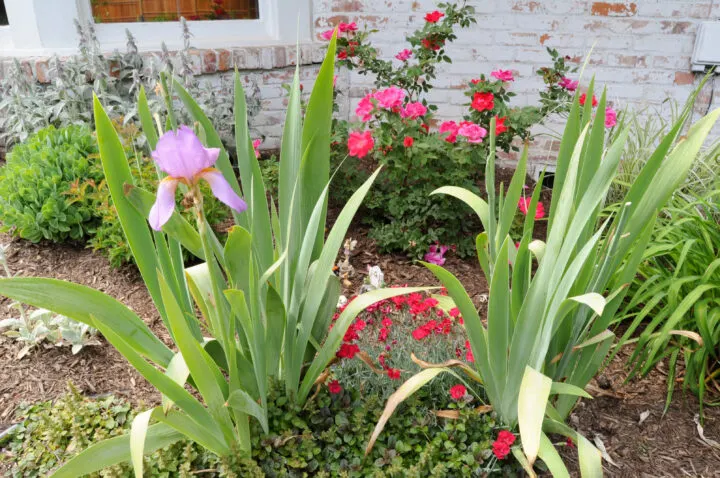
3 | Where to Place Each Plant
Every plant that you purchase from a nursery or home improvement store will include a tag with instructions for care. This includes the hours of sunlight, watering, and how much space it will need to grow to full maturity.
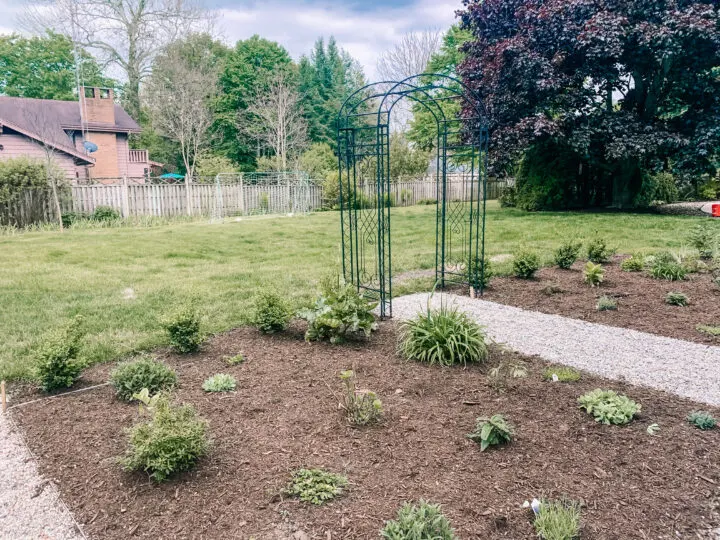
Sometimes when I look at their recommended spacing I think it is overkill, but it really is important when the plant matures after a few years and grows much larger. Here is our garden the first year we planted the garden.
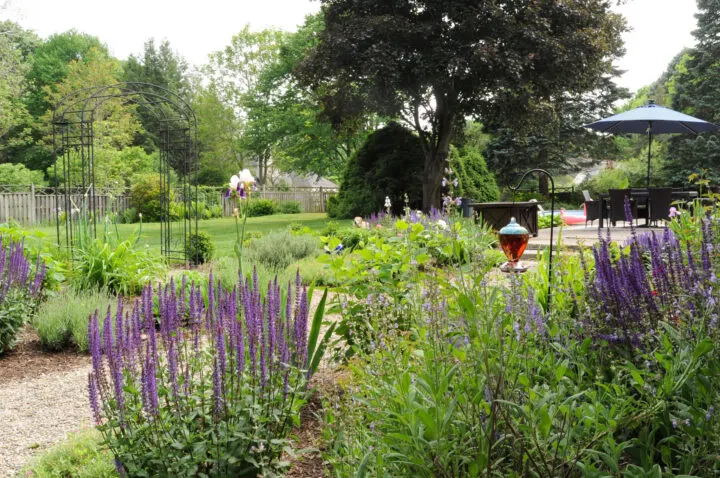
And here is that same garden just a year later. The plants have grown so much!
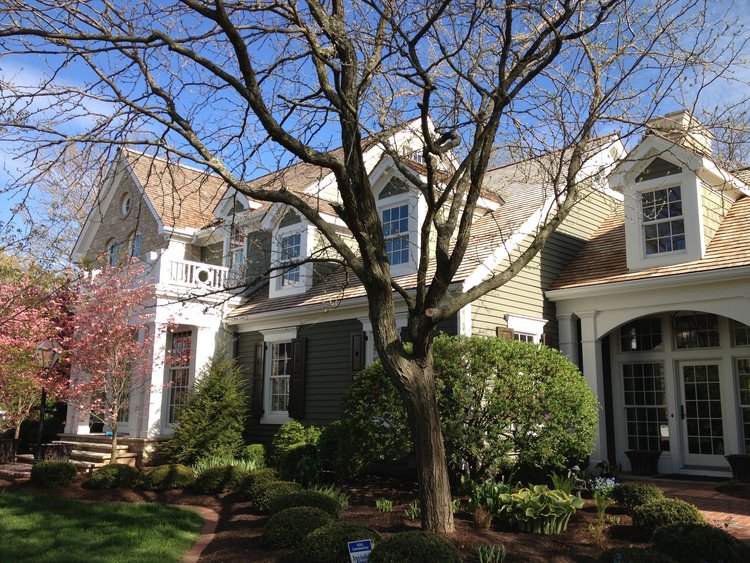
If you have large bushes or shrubs you want to add to your flower bed, Deb recommends keeping larger bushes away from the windows.
This placement will maximize sunshine coming into your home and will not obstruct your view of the garden from the inside. Large shrubs and plants work great as anchors in the corner of a flower bed or between two windows.
4 | How to Water the Flower Bed
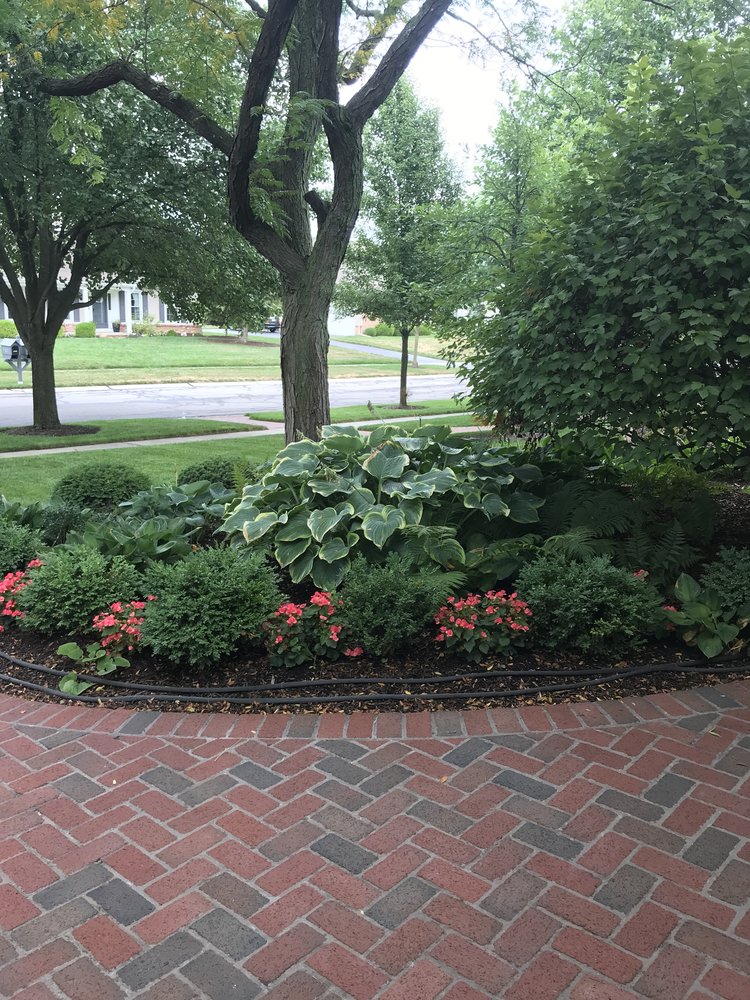
Installing drip lines throughout your flower bed is a great option for keeping your flowers watered.
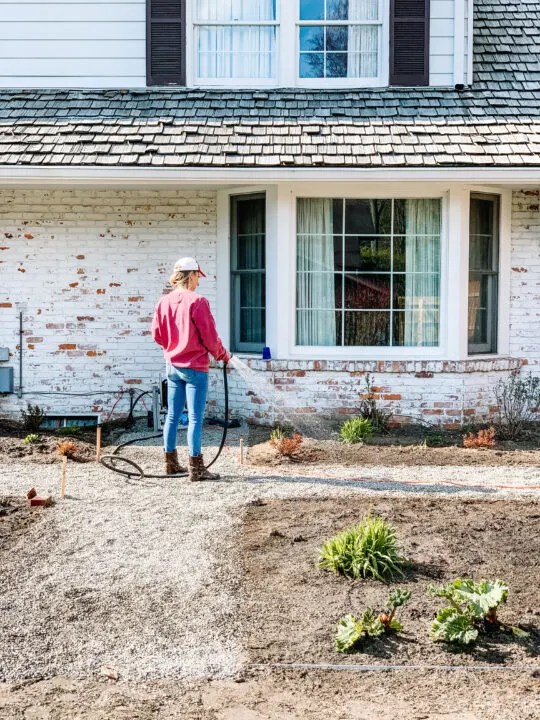
My cottage-style garden is made up primarily of native plants and I use a hose to water them every few days. Avoid watering your garden in the middle of the day when it is really hot. The water will evaporate more quickly and it can burn the leaves.
Every year we lay a fresh layer of mulch to keep the soil moist. I water our beds in the early morning or in the evening when the sun is low in the sky.
5 | Mulch Options
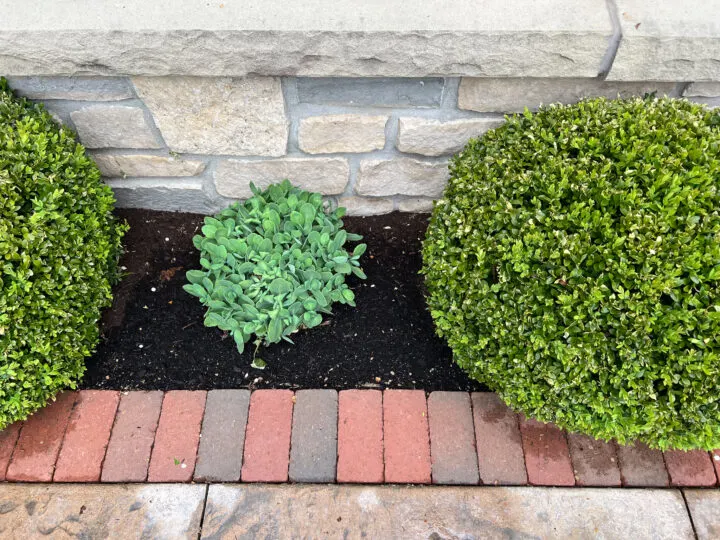
Mulch comes in a variety of different colors and you may not be sure which one to choose. Deb recommends using a color that doesn’t compete with the flowers – natural tones, like brown, that don’t have dye or pesticides.
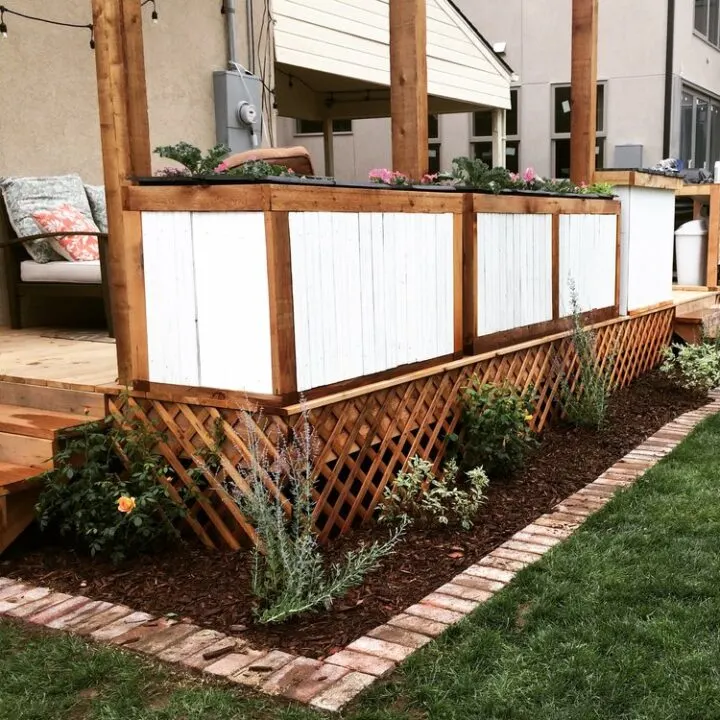
When adding mulch to your flower bed, do not lay it down too thick. If there is too much mulch next to the side of your home, it can cause moisture issues. Deb’s general rule is to keep mulch off of the siding.
If you can, add a 3-inch barrier of rocks/pebbles between the house and mulched flower bed. Here are a few of the benefits when adding this rock barrier:
- Prevents mulch/dirt from splashing on the house when it rains
- Reduces fire risk – In Massachusetts, it is illegal to have mulch against apartment buildings because it is a fire risk (ex: dropping cigarette butt onto dry mulch)
- Lowers the risk of pests penetrating the home
Deb’s Top Garden Nurseries in Toledo, OH
- Nature’s Corner – great for finding native plants
- Creques Nursery – Where Deb finds her lime zinnias
- Fitkins Greenhouse – Great place to find shade plants
- Lowes or Home Depot – To find perennials, fertilizer, mulch
- Whiteford Road Greenhouse – great nursery but can be pricey
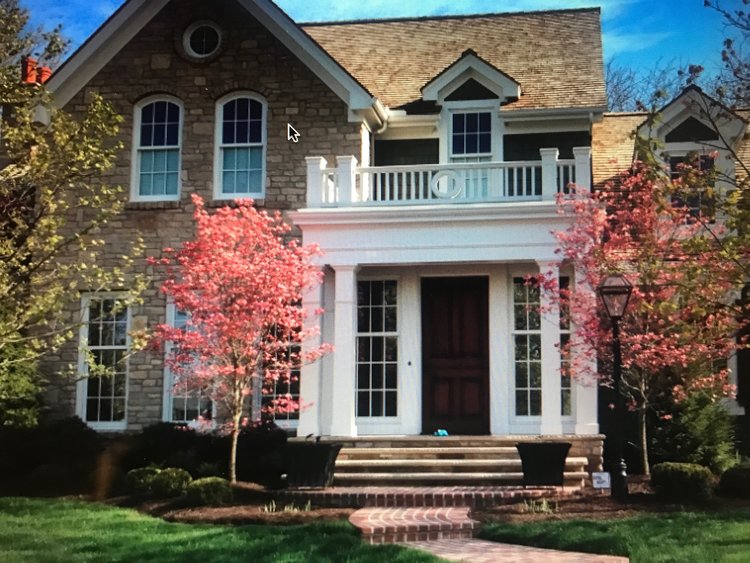
More Posts You Will Love
- Gardening Tools Every Gardener Should Own
- Peony Bush Care in the Garden | Beginners Guide
- Camouflage Your Electrical Box with Paint
- How to Build a Simple Raised Garden Box | DIY
- DIY Compost Station
- Tour of the Historic Bosler House Gardens
- How to Install Brick Edging Around a Patio
- Transform Your Concrete Patio with a Fresh Coat of Paint | How To
